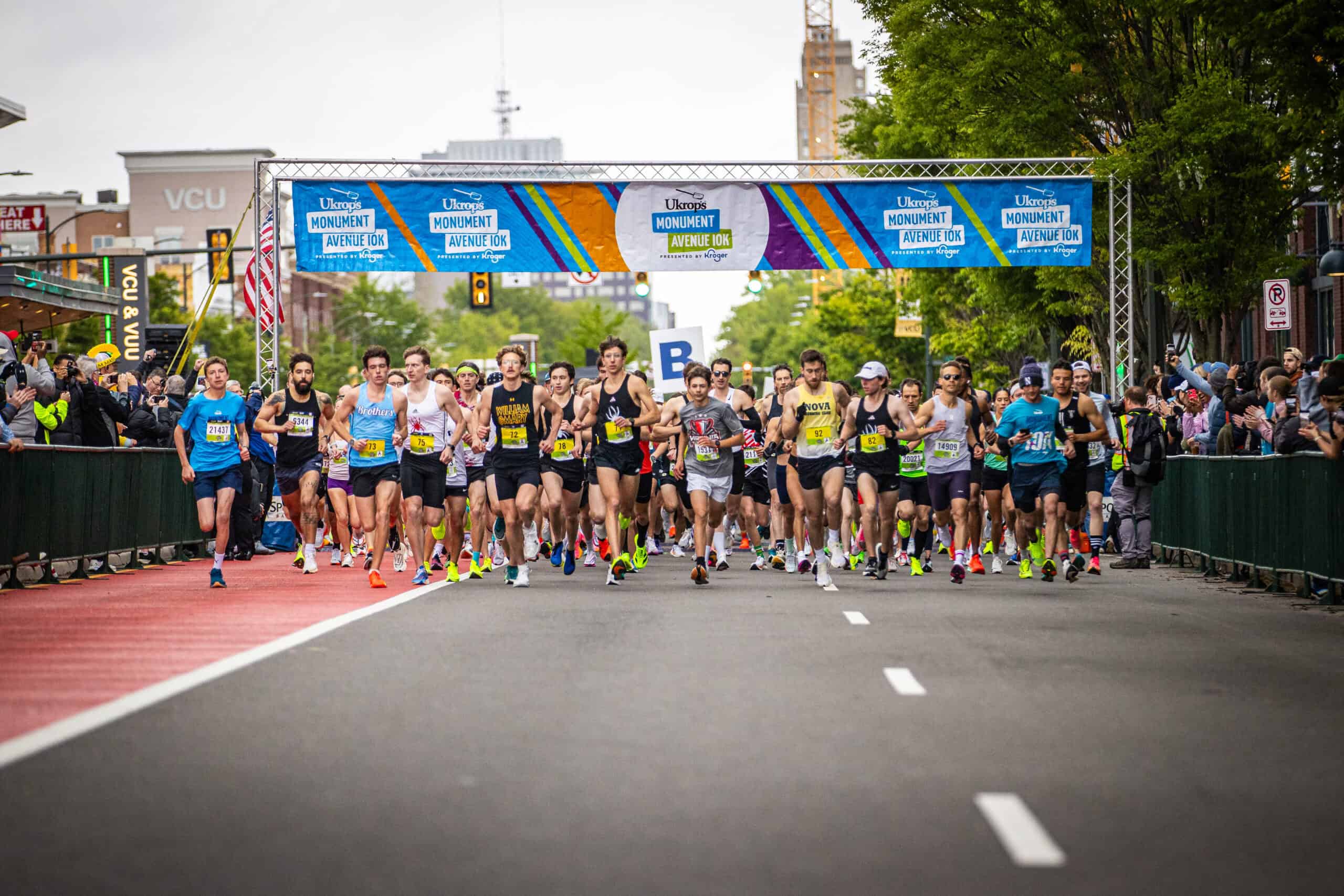The Compelling Case for the Fall Line in Richmond’s bryan park
Written by: Brantley Tyndall, Director of Bike Walk RVA
The following blog post is an update on the two primary divergent perspectives of the Fall Line in Bryan Park and why we support building a prominent, accessible, high-quality, and high-impact trail through one of Richmond’s premier parks. This just so happens to be the design the City of Richmond has already put forth.
If you do nothing else, we encourage you to sign Sports Backers’ support letter for this once-in-a-lifetime trail.
Help us get to 10,000 signatures across the region by the end of 2025!
For the Fall Line to have the impact we all think it can have, we must ensure a few things:
- The Fall Line promises to be a driver for trail-oriented development and grow the vibrancy and economic vitality of our region. People will want to live and work near the trail, and efforts to dilute the quality and consistency of the trail will stymy the economic value the trail offers.
- The Fall Line, in its entire corridor, must be paved, wide, and totally separated from car travel lanes. Standard bike lanes or simply sharing roads with cars are frankly not the Fall Line. There must not be substandard sections, as those will reflect poorly on that area and trail users there. This is a regional project, and we all benefit from every part of the trail being consistently high quality.
- People with disabilities should be at the forefront of planning and design. If advocating for a different alignment for the trail excludes people with disabilities, including sharing space with cars or requiring unnecessarily long distances, this alternative must be rejected.
- Active Transportation is the focus of the Fall Line. Year after year after year, transportation (i.e. cars and trucks) is the single biggest contributor to Virginia’s greenhouse gas pollution as reported by the Virginia Department of Environmental Quality. The Fall Line is the single biggest effort our region has ever put forth to provide a real alternative to driving.
- Developing this trail will be a major contributor to tree canopy installation and replacement along its corridor. At Sports Backers, and we support sustainability, and we know that shade benefits trail users! If sustainability is something you care about, the small amount of pavement this trail requires in Bryan Park is not the prime concern. Even before construction of the trail, we have planted more trees than will need to be removed for the Fall Line to be built in Bryan Park, and we are just getting started.
- Building the Fall Line where people already walk and bike, and emphasizing where people want to go, is vital. If the trail is realigned to marginal areas with fewer amenities such as lighting and bathrooms, people will not use it. Then what’s the point?
A Holistic Perspective on the Fall Line trail’s route through Bryan Park
By Natalie Rainer, February 2025
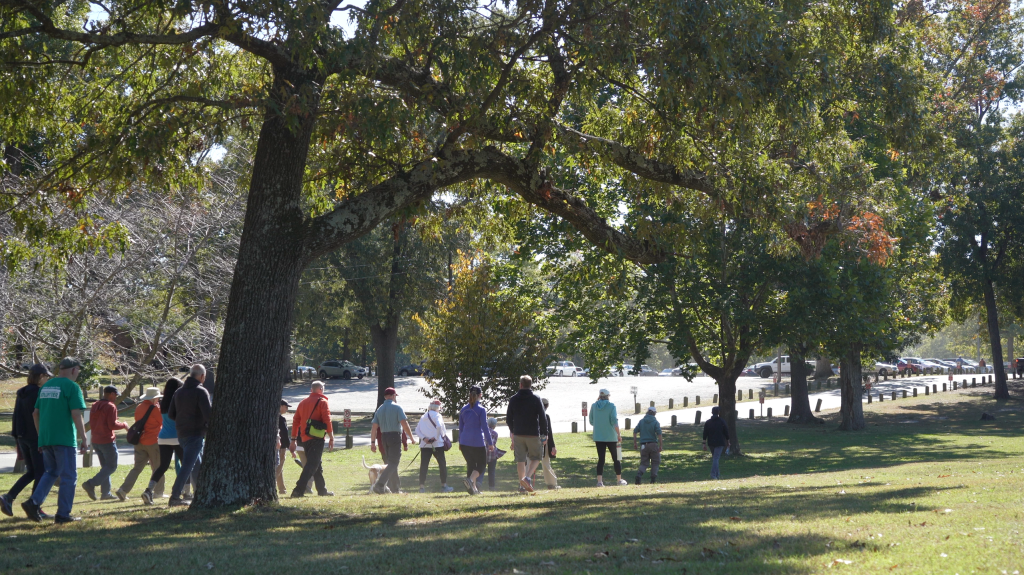
At the start of 2025, six miles of the Fall Line trail, a world-class paved multi-use trail that will stretch 43 miles, connecting Ashland to Petersburg, are nearly completed. This project opens a new chapter for Central Virginia, as it will make active transportation a greater possibility for 340,000 people living within two miles of the trail.
When complete, the Fall Line will connect 95 public schools, and six colleges (including two HBCUs) within seven jurisdictions. This is unlike anything the Richmond region has ever considered and dramatically elevates our active transportation network to a higher level. The trail will spur economic growth and transit-oriented development throughout the corridor. This trail will serve people biking and walking now while empowering more community members to shift their car commutes to biking and walking. This is especially impactful as the Fall Line connects with transit, decreasing reliance on vehicle pollution overall. Tree plantings along the trail will increase canopy and absorb stormwater runoff. The development of this trail will be a win-win for all communities it connects.
In the City of Richmond, ground has been broken, but the alignment of the trail through Bryan Park has yet to be finalized. It turns out that building a trail in a park can be complicated! There is a Preferred Alignment plan, which the City has been working on for several years. Sports Backers has helped to shape the alignment and design through the park since at least 2022, working with Richmond Parks and Public Works staff, community partners, consultants, and the public. We firmly believe the Preferred Alignment is the best and optimal option. Truth be told, though, it has generated some opposition, and an Alternate Route has been suggested by community members who we think have lost sight of the bigger picture.
A clear understanding of this debate begins with recognizing the purpose of the Fall Line trail. It is not simply a “recreational bike path”. The Fall Line is a transportation-oriented, multi-use pathway designed for bike commuting, wheelchair users, walking, running, pushing strollers, and encouraging people to stop along the way. It is as much for casual trail users, young children, older adults, and people with mobility challenges as it is for who we might think of as “recreational” bike riders, bike clubs, and fitness. As such, where the trail is designed to go, both within Bryan Park and beyond, is crucial.
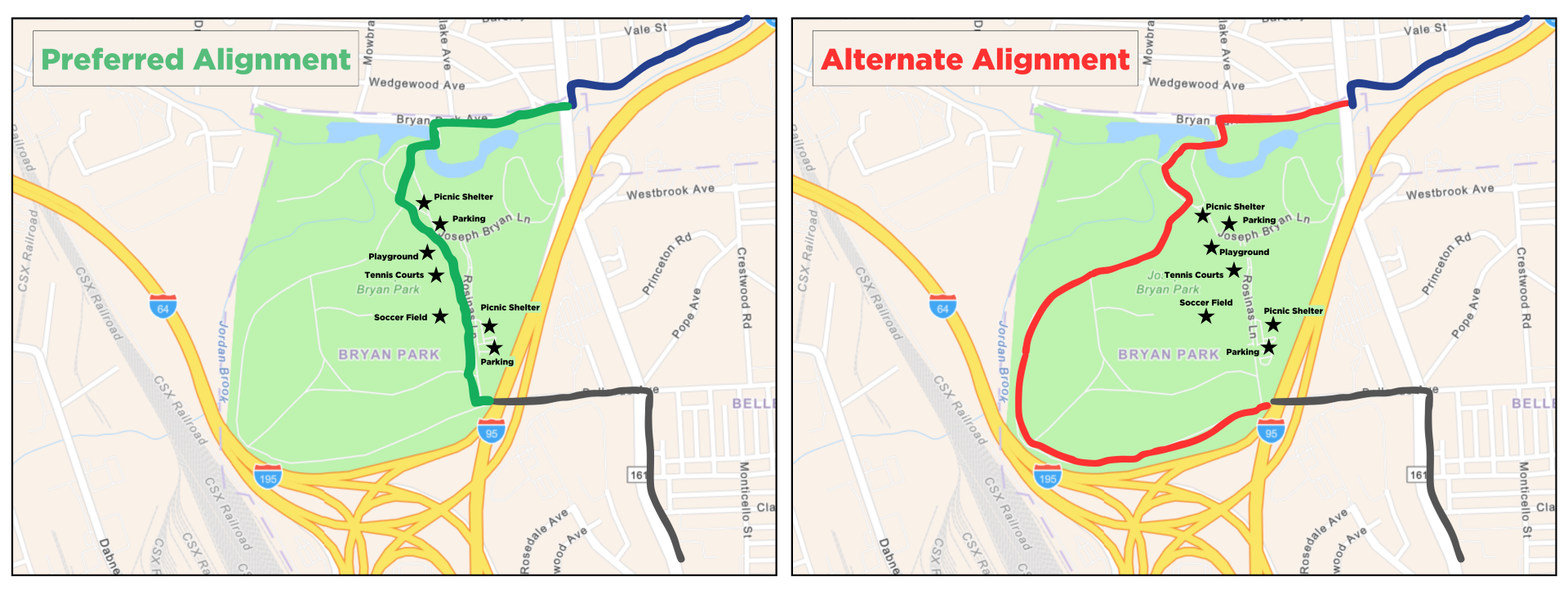
The Preferred Alignment and Why it Works
- Dedicated pedestrian path, separated from cars: Currently there are no sidewalks in Bryan Park, even where the most pedestrian activity is around the park’s amenities. Park users on foot and bike are forced to share narrow, curving streets with cars – a major safety hazard. The Preferred Alignment will solve this problem by connecting park users directly to the park amenities they want to access with a wide, paved pathway.
- All abilities access: Currently Bryan Park does not have routes compliant with the American with Disabilities Act (ADA), and people using wheelchairs or other walking aids cannot utilize park amenities safely. The Preferred Alignment of the Fall Line trail will rectify this inequity by providing a wide, well-lit, paved, ADA compliant trail on which all types of people can safely access the park’s amenities.
- Direct, commuter-friendly transportation route: The Fall Line will be used extensively by people commuting to work and school. The Preferred Alignment is designed for safety and convenience, providing a direct route through the park where existing street lights will guide their sunrise and sunset commutes. As a transportation facility, the trail will be open 24/7, and people will be commuting at all times. An atmosphere of safety is essential for a successful, transportation-oriented, community trail, and the shorter route through the park facilitates efficient trips.
- Connectivity to park amenities: It cannot be overstated that the Preferred Alignment will serve people who already use the park who currently have no safe way to walk between parking lots, bathrooms, playgrounds, soccer fields, and shelters. This is the best planning that can be conceived! Commuter cyclists with heavy bikes, parents with strollers, children learning to ride bikes, seniors looking for a safe place to walk, and especially wheelchair users and people with limited range are best served by direct connections to the things any human needs in a park. These community members will want easy access to park bathrooms, picnic shelters, and park events. The Preferred Alignment is designed with these trail users in mind.
- Environmental Sustainability: The Preferred Alignment lays the groundwork for a trail that will over time be a big win for environmental sustainability. Many people will switch from car commutes to bike commutes, cutting carbon emissions and reducing roadway congestion.
- Trees: The Preferred Alignment will not require the removal of any healthy and native trees. To mitigate this, Sports Backers has already planted eight new native trees with volunteers during RVA Tree Week – more than would even be removed for the Fall Line trail’s construction. Additionally, more trees will be planted along the Fall Line to create shade for trail users, which will fight urban heat and absorb stormwater runoff. The tree care plan designed for the City is the best and most comprehensive the City has ever done – this is a true win for trees and environmental issues like shade and stormwater management. And it should be explicitly stated that the City emphasized, reevaluated, and modified its plan to further reduce tree impact after multiple community meetings where tree retention was emphasized. Furthermore, Richmond’s Department of Public Works has committed to installing two trees for every tree removed for trail construction. This is the system working.
Watch a discussion of the alignment at the October 2024 Friends of the Fall Line with local and state administrators, community members using Street View.
The Alternate Alignment and Why it Doesn’t Work
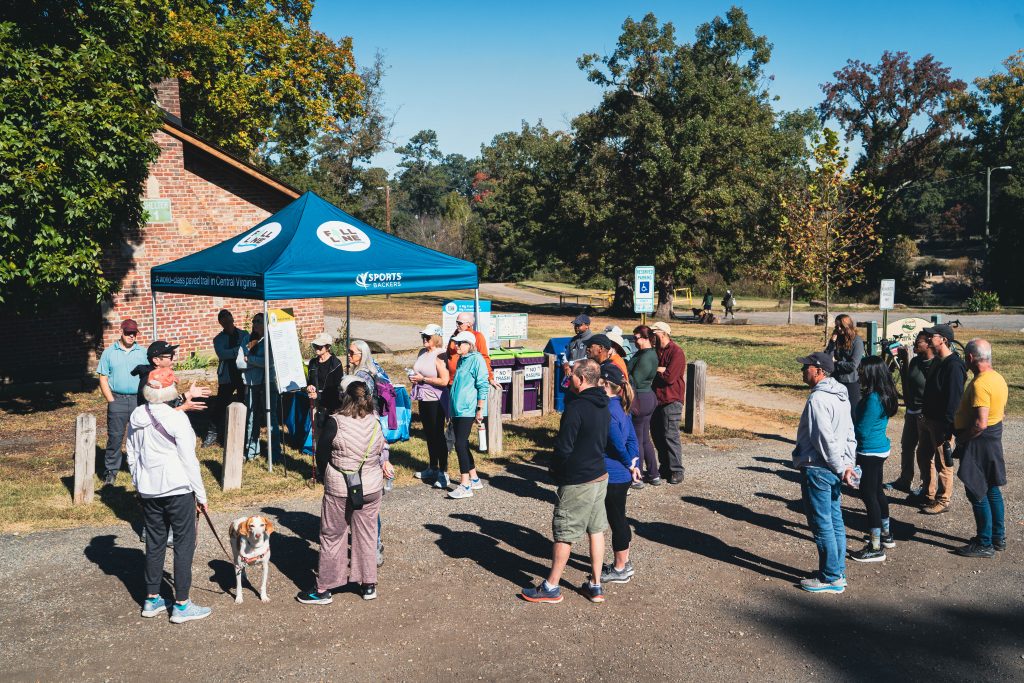
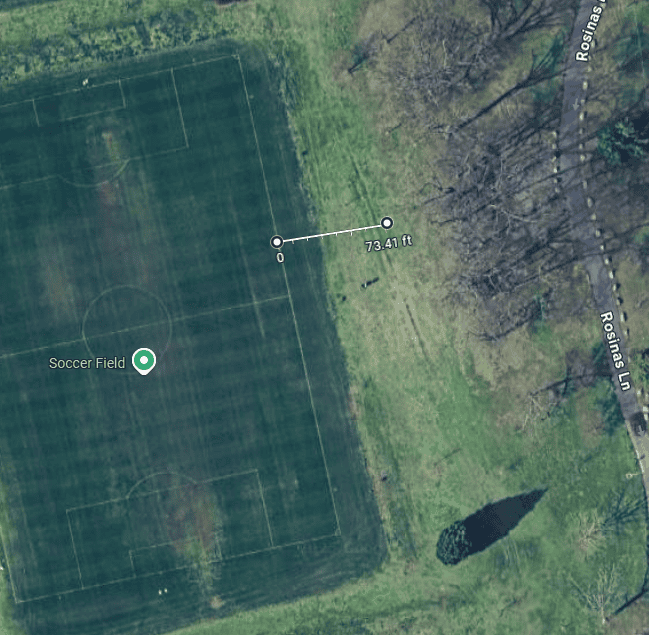
- Fails to improve pedestrian safety: The Alternate Alignment shifts the trail onto an “existing road” in the back of the park. This existing road is a service road with regular car access and no street lights far removed from most park amenities. Shifting the Fall Line to this service road will do nothing to increase safety and comfort for park users accessing the park’s soccer fields, farmer’s market, playground, bathrooms and tennis courts.
- Fails to improve bicycling experience: Bicyclists can currently use the back roads if they choose to. However, those roads are often open to cars to access the RVA Big Market, the 51-year tradition of Bryan Park Bike Races that happen every Tuesday during the warm months, and car access to the Azalea Garden. The Preferred Alignment does not impact these existing uses of the park and helps to keep the back half of the park generally quiet for those seeking that experience.
- Does not provide ADA access to park amenities: The Alternate Alignment upholds existing inequity by ignoring the needs of people with disabilities. The lack of accessible ADA pathways means people using wheelchairs or other walking aids cannot utilize Bryan Park’s amenities safely.
- Pushes trail users away from park amenities: The Alternate Alignment does not consider the needs or enjoyment of trail users. Opponents of the Preferred Alignment claim that the trail will be a safety hazard because fast-moving bikes will collide with children walking to the soccer fields. Failing to put casual and diverse trail users first in the design intent shows a bias about who the trail and who Bryan Park are for, while sacrificing an opportunity to make a night-and-day difference in the experience and safety of people who use the park now. For reference, the Fall Line is planned to be about 70ft from the nearest soccer field. There are simply no conflicts, whatsoever. Meanwhile, the trail will benefit soccer families for generations to come. To see how paved trails benefit local fields and park amenities, one only needs to look at Henrico’s Deep Run Park and Taylor Farm Park.
- Increased distance: The Alternative Alignment uses a circuitous and roundabout route around the outer western edge of the park. It’s a beautiful part of the park that is great for remote recreation in a quiet setting, that is for sure, but it adds .8 miles to the distance someone would have to walk, roll, or push a wheelchair or stroller. That’s nearly 20 minutes of extra walking at an average walking pace, a real detriment to active transportation. This increased distance doesn’t account for the compounding additional distance of extra trips to get to park amenities that are not on this route.
- Is not commuter-oriented: The Alternate Route will add unnecessary distance for commuters and send them through an area of the park that will be unlit at night and in the early morning. This is a much more realistic safety hazard compared to congestion in the main alignment through the park, as the trail will be open at all times, and people will be commuting at all times.
- Does not meaningfully reduce paving or tree impact: Opponents have used the tree argument to advance their Alternate Alignment and have proposed primarily three alternative routes. One of their Alternate Alignment concepts proposed would require widening the back service road of the park, necessarily removing dozens and dozens of trees along the entire corridor. A second alternative would pave the trail through some of the forested area and grass along the remote back side of the soccer fields. That the opponents have uplifted several concepts that specifically pave the trail and remove trees, there seems to be a clear indicator that protecting trees in the park is actually secondary to their intention to simply prevent the Fall Line in the park.
And as noted above, building the trail where it will serve people using the park today is precisely the point. It’s the point! We have heard from soccer players, soccer moms, and families that increasing biking and walking access to the soccer fields in Bryan Park is exactly the kind of thing that they want. Let’s make it a reality!
We need your help.
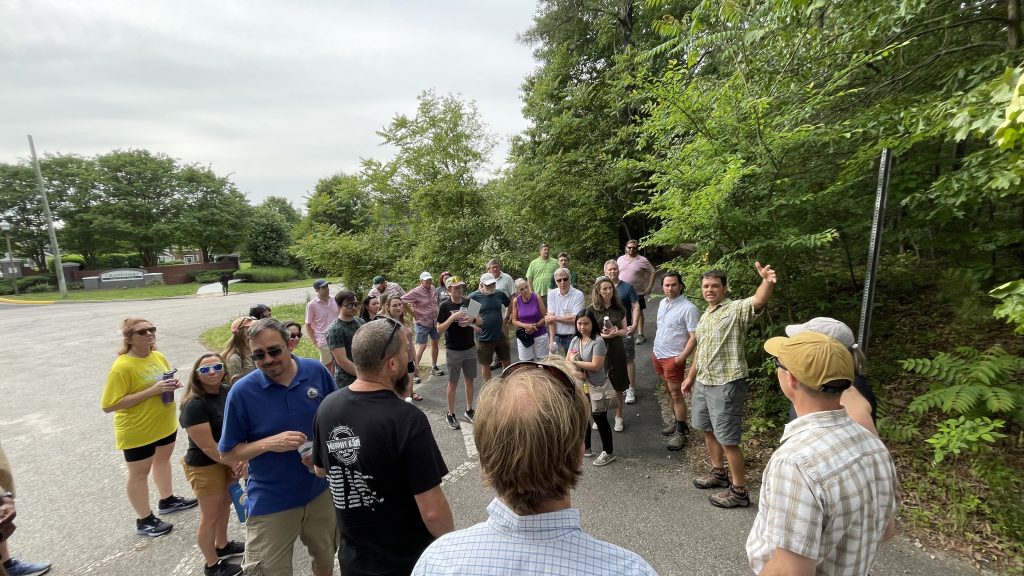
We at Sports Backers believe that ALL people should be able to comfortably utilize the Fall Line, including commuting, recreating, and visiting safely in Bryan Park. The Alternative Alignment does not address the needs, comfort, nor convenience for the majority of trail and park users, those in the park now nor those projected in the future. Opponents of the Preferred Alignment conveniently ignore ADA access and active transportation in their arguments. Their short-sighted environmental claims do not acknowledge the long-term benefits of reduced car traffic and improved stormwater management that trail development can accomplish. It is our stance at Sports Backers that a balanced trade-off is needed to build a trail that will allow for a future for our community that is safer, more active, more connected, and more environmentally sustainable. The Preferred Alignment through Bryan Park will transform this vision into a reality.
The Preferred Alignment checks all the boxes: ADA Access, safety, connectivity, transit equity, community development, and long-term environmental sustainability. Share your voice for the Fall Line’s Preferred Alignment by signing this support letter. Voice that you share our vision for a Fall Line trail that uplifts and connects ALL people in the region.
Thank you in advance for your support of this vital project!
Please feel free to reach out to me with any questions.
Natalie Rainer
Engagement Manager, Bike Walk RVA
[email protected]
Latest News & Updates
-
Community Support for the Fall Line Overflows the room
Community Support for the Fall Line Overflows the room Written by: Natalie Rainer, Community Engagement Manager If there was a question about whether the community supports the Fall Line, with its “Green Line” serving the most people of all ages and abilities along the main corridor through the park, it has been answered. On Wednesday,…
-
Henry Haase takes first place in the 26th running Ukrop’s Monument Avenue 10k to win the Collegiate Running Association 10k Road Race National Championships, Sophia King takes the first female finisher title
Henry Haase takes first place in the 26th running Ukrop’s Monument Avenue 10k to win the Collegiate Running Association 10k Road Race National Championships, Sophia King takes the first female finisher title Written by: Nan Callahan, PR & Communications Manager Event celebrates participation increase RICHMOND, VA – The Ukrop’s Monument Avenue 10k presented by Kroger…
-
Episode 69 – Keya Wingfield is 10k Ready
Episode 69 – Keya Wingfield is 10k Ready You might know Richmonder Keya Wingfield, from the Food Network, Candy Valley Cake Company, and most recently Keya’s Snacks. But what you might not know about Keya is that physical activity, and walking the 10k have been huge in her weight loss journey.

